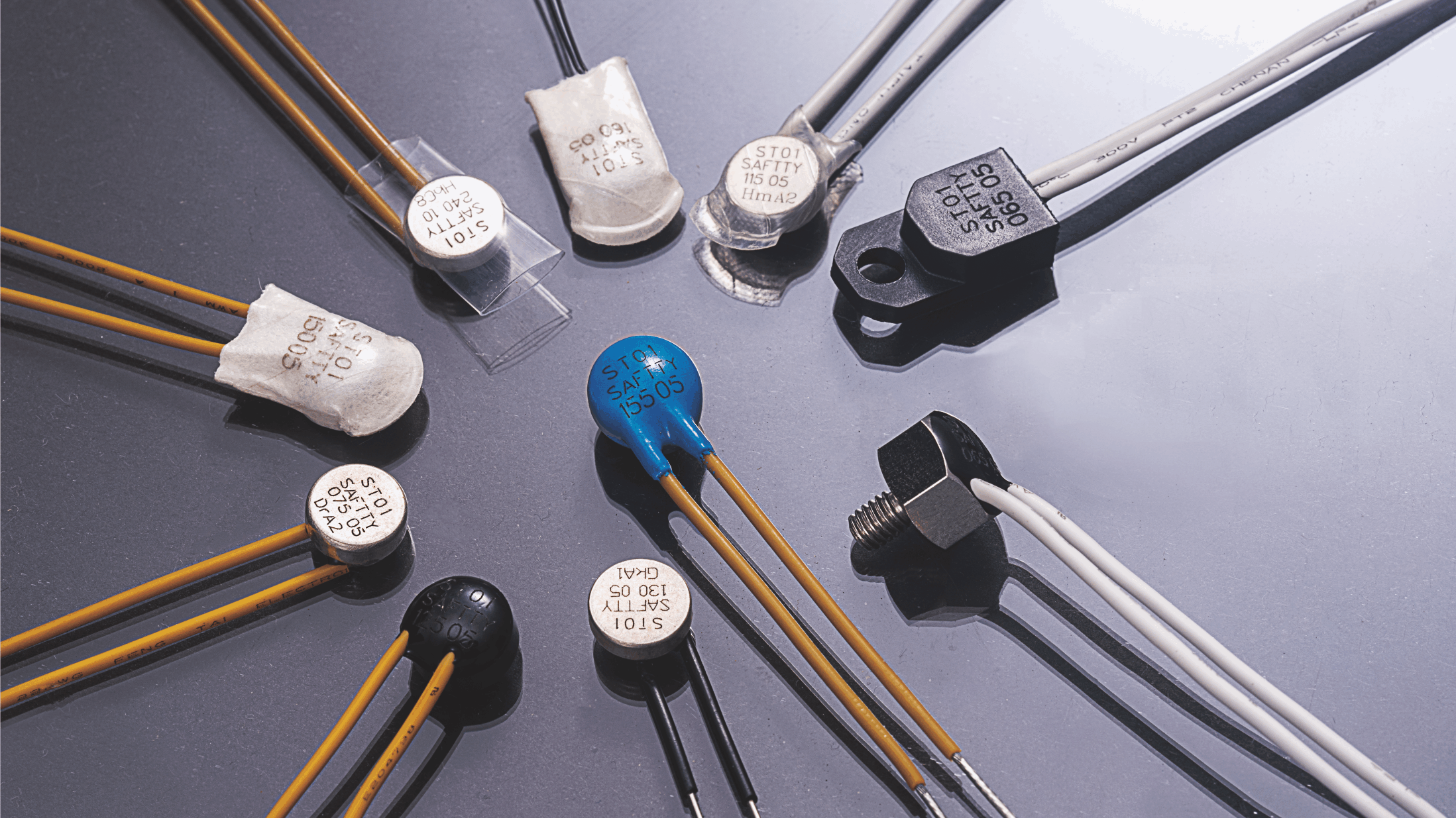In modern electrical and electronic systems, thermal protection plays a crucial role in preventing overheating, equipment failure, and fire hazards. Among various thermal protection solutions, thermal protectors stand out as essential components for ensuring the safety and longevity of devices. They are widely used in motors, transformers, household appliances, medical equipment, and industrial machinery.
1. What is a Thermal Protector?
A thermal protector is a temperature-sensitive device that detects excessive heat and responds by either disconnecting power or activating cooling mechanisms to prevent damage. It acts as a safeguard, automatically intervening when temperatures rise beyond safe operating levels.
Unlike a thermal fuse, which is a one-time-use component, a thermal protector can reset and continue operation once the temperature returns to normal. This makes it ideal for applications requiring continuous monitoring and protection.
2. How Does a Thermal Protector Work?
The operation of a thermal protector is based on temperature detection and circuit control. The working process can be summarized as follows:
Temperature Monitoring: A thermal protector contains a bimetallic strip, thermistor, or other heat-sensitive element that reacts to temperature changes.
Activation Threshold: When the temperature exceeds a pre-set threshold, the bimetallic strip bends or the sensor changes resistance, triggering the circuit to open or modify power flow.
Automatic Reset or Manual Reset: Some thermal protectors automatically reset when temperatures drop to safe levels, while others require manual reset for added safety.
3. Types of Thermal Protectors
Thermal protectors come in different designs depending on their applications and reset mechanisms:
Bimetallic Thermal Protectors
Based on a bimetallic strip that deforms when heated, breaking the circuit.
Common in motors, transformers, and household appliances.
Available in automatic reset and manual reset versions.
Thermistor-Based Thermal Protectors
Use PTC (Positive Temperature Coefficient) or NTC (Negative Temperature Coefficient) thermistors to regulate current flow.
Found in battery packs, power supplies, and electronic circuits.
PTC thermistors increase resistance with rising temperatures, limiting current.
NTC thermistors decrease resistance, enabling precise temperature sensing.
Snap-Action Thermal Protectors
Provide fast response time by using a snap-action mechanism to disconnect power.
Used in heating systems, HVAC units, and electric fans.
Embedded Thermal Protectors
Built directly into motors, transformers, and heating elements.
Offer direct and precise temperature sensing for enhanced protection.
4. Applications of Thermal Protectors
Electric Motors and Transformers
Prevents motor overheating, which can cause insulation failure and permanent damage.
Protects transformers by cutting power during excessive load conditions.
Ensures the reliability of HVAC motors, industrial pumps, and automotive fans.
Household Appliances
Used in hairdryers, washing machines, coffee makers, and refrigerators.
Prevents overheating due to prolonged use or malfunctioning components.
Enhances the safety of kitchen and heating appliances.
Battery Packs and Power Supplies
Ensures lithium-ion battery safety by preventing thermal runaway.
Protects laptop, smartphone, and electric vehicle (EV) batteries.
Prevents overheating in power adapters and chargers.
Medical Equipment
Ensures stable operation of ventilators, sterilizers, and diagnostic machines.
Protects sensitive electronics from temperature-induced damage.
Industrial and HVAC Systems
Prevents overheating in air conditioning units, heating elements, and refrigeration systems.
Ensures stable operation of factory machinery and industrial motors.
5. Benefits of Thermal Protectors in Thermal Protection
Prevents Equipment Damage
Overheating can cause permanent damage to motors, transformers, and circuit boards.
Thermal protectors ensure safe operating temperatures, extending device lifespan.
Reduces Fire Hazards
Unchecked overheating can lead to electrical fires.
Thermal protectors cut power before critical temperatures are reached, reducing risks.
Enhances Energy Efficiency
Prevents excessive energy loss due to overheating and electrical resistance.
Helps maintain optimal performance and reduced power consumption.
Automatic and Reliable Protection
No user intervention is needed, as thermal protectors respond automatically.
Some models feature manual reset options for added safety in high-risk applications.
Cost-Effective and Easy to Integrate
Small, compact design allows for easy integration into electronic circuits.
Low-cost solution for enhancing safety and durability.
Thermal protectors are indispensable components in electrical and electronic devices, ensuring reliable thermal protection against overheating. Their ability to detect excessive temperatures, interrupt power flow, and reset automatically makes them a vital safeguard in various industries, from electric motors and battery packs to household appliances and medical equipment.
As technology advances, the demand for more efficient, compact, and intelligent thermal protection solutions will continue to grow. Investing in high-quality thermal protector is not just about preventing equipment failure—it’s about ensuring safety, efficiency, and long-term reliability in electrical systems.













 中文
中文 English
English Deutsch
Deutsch Italiano
Italiano 한국어
한국어 にほんご
にほんご


